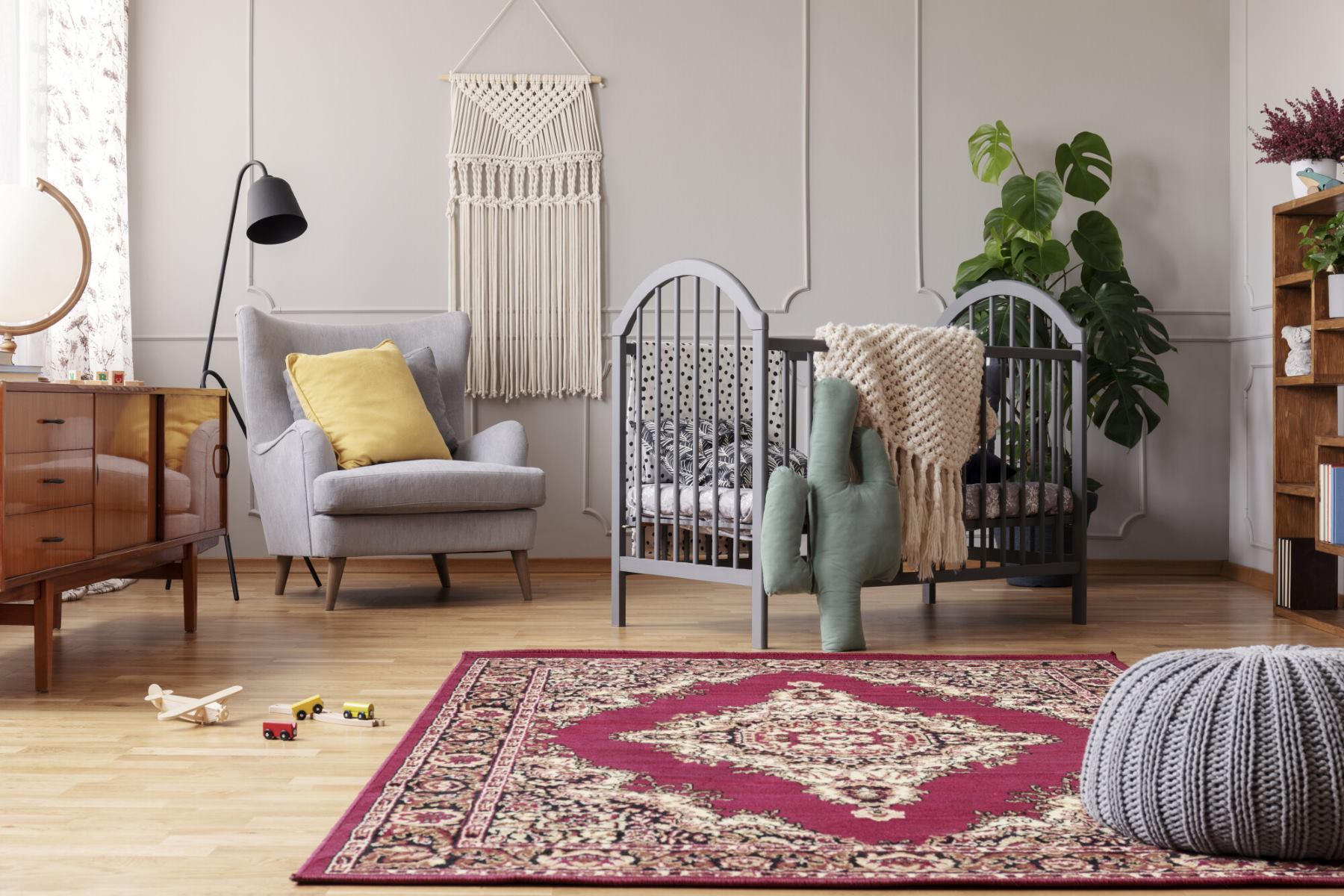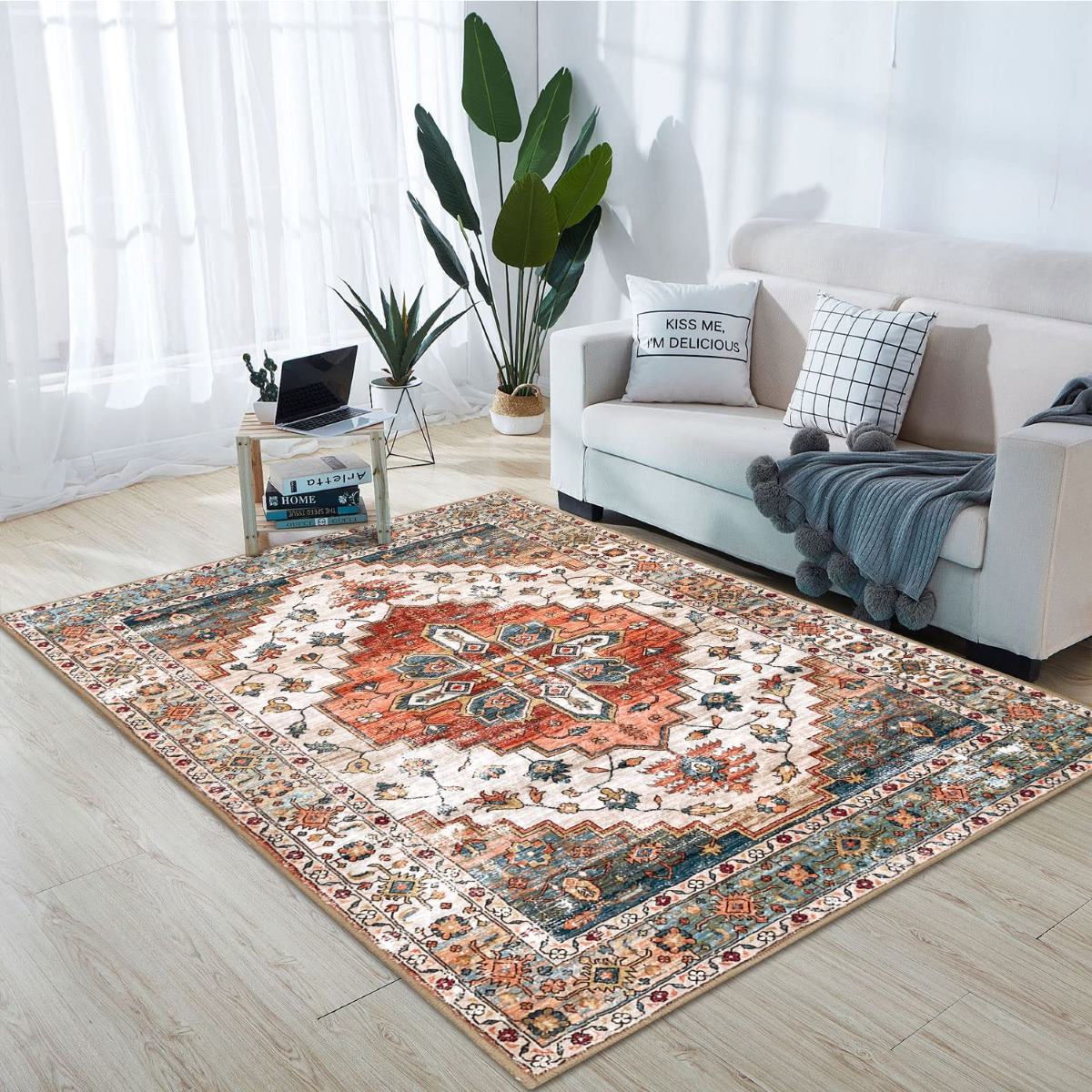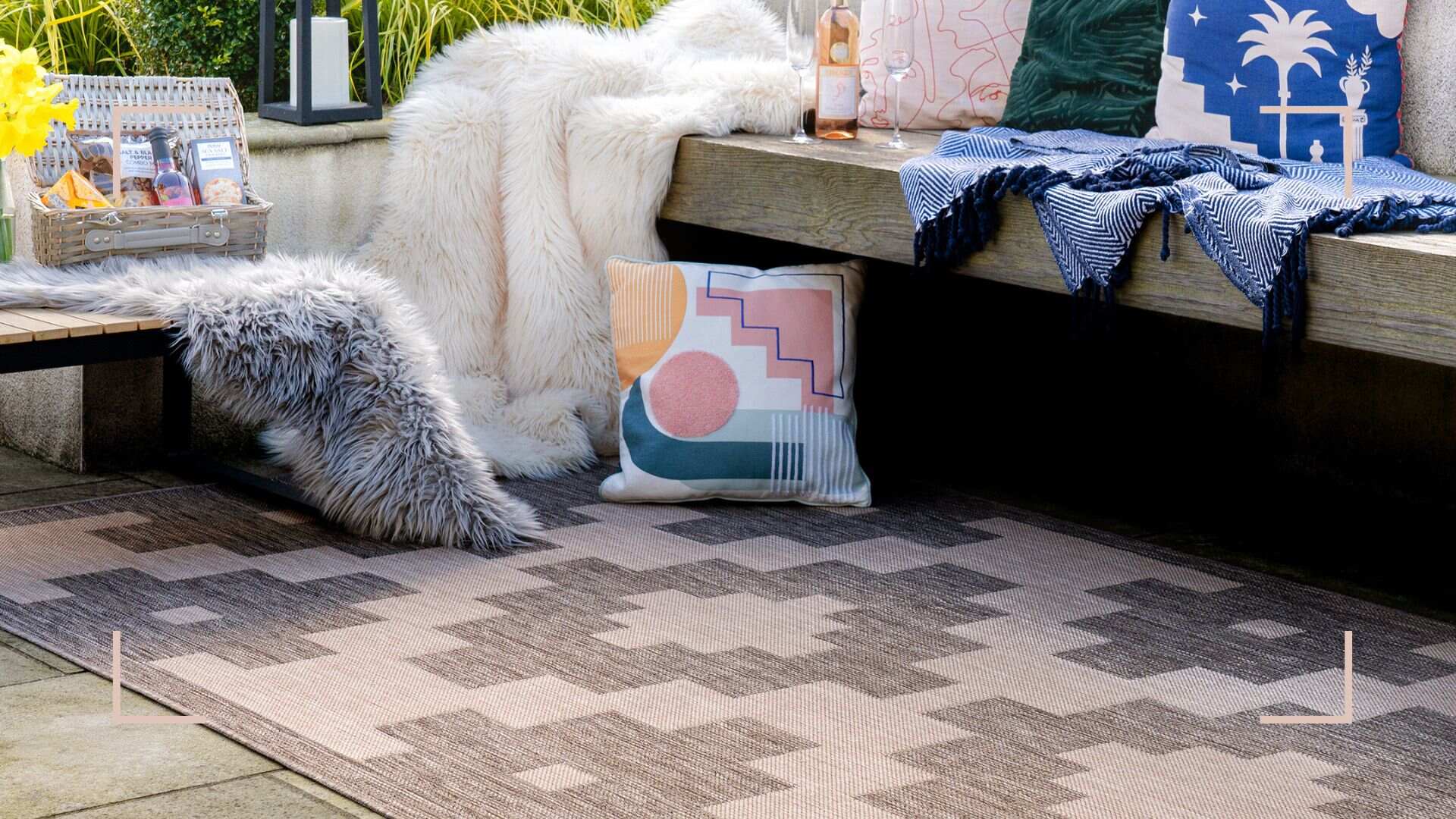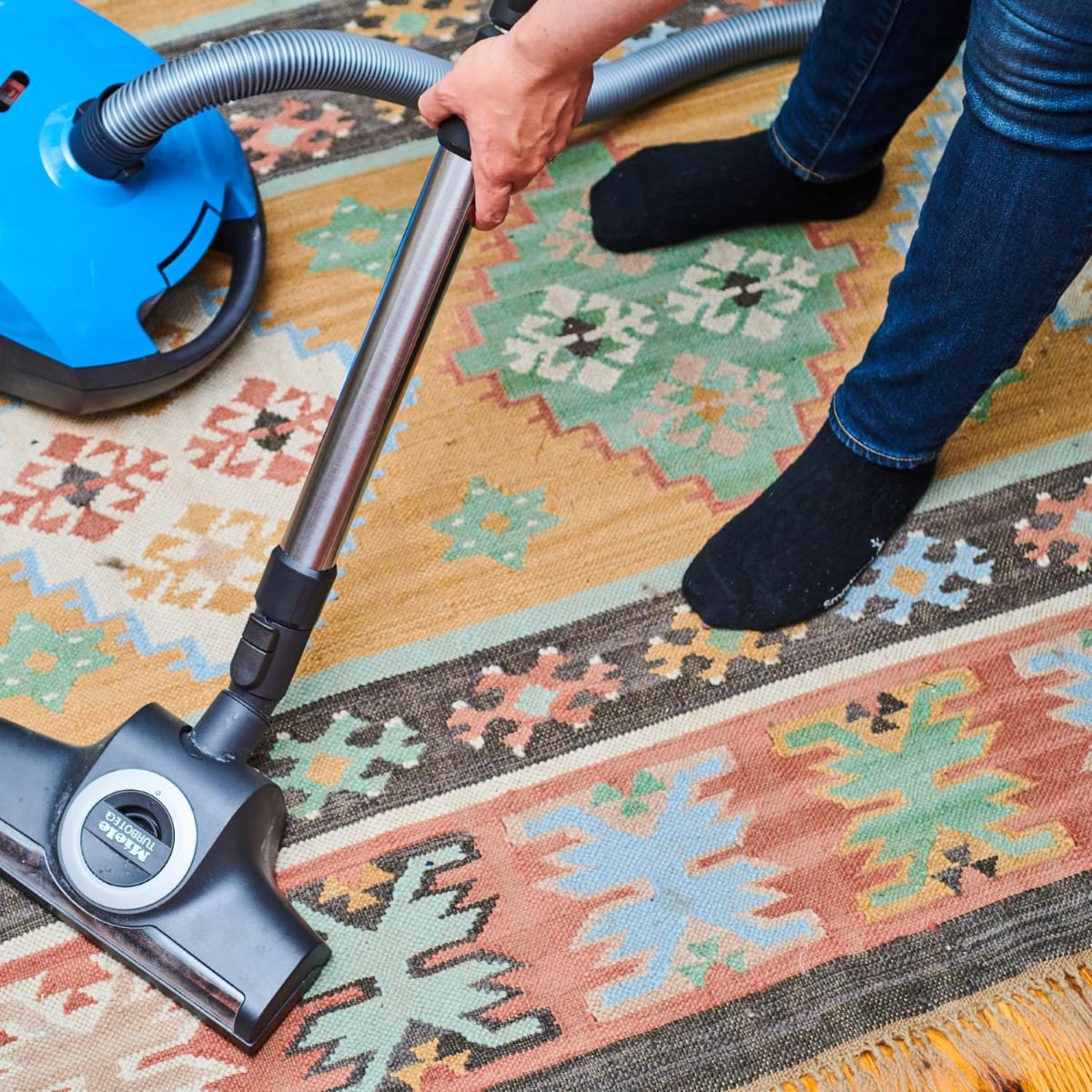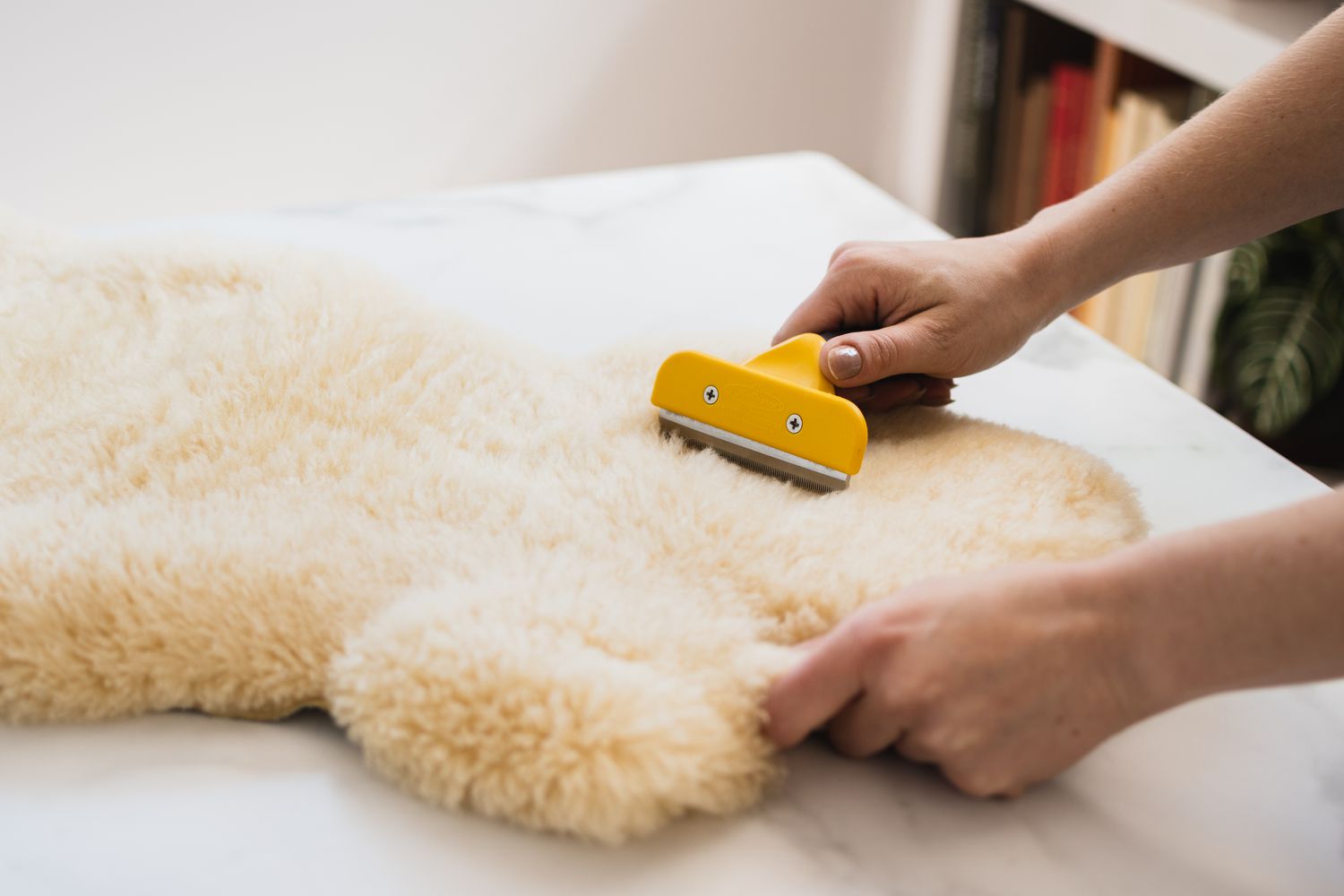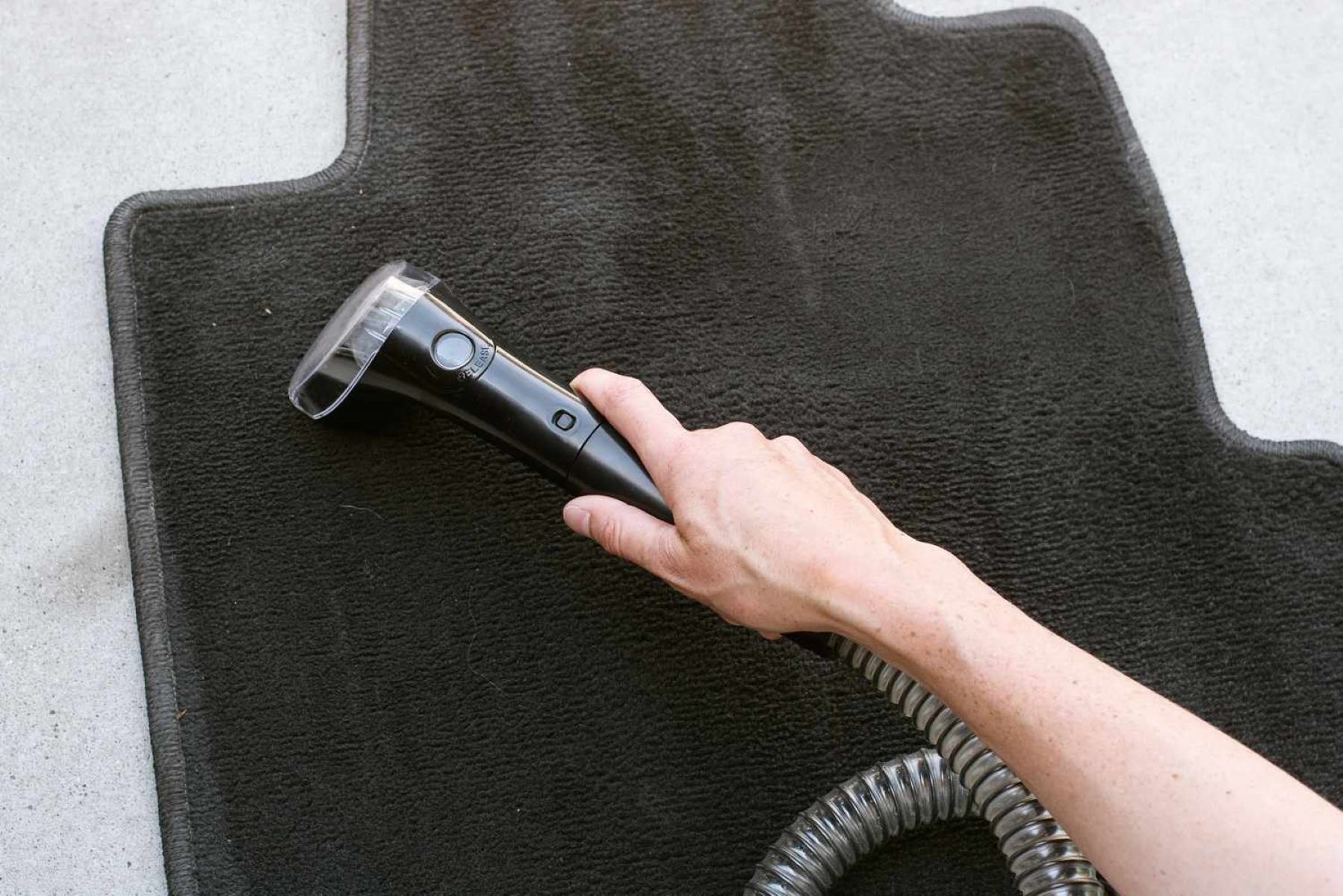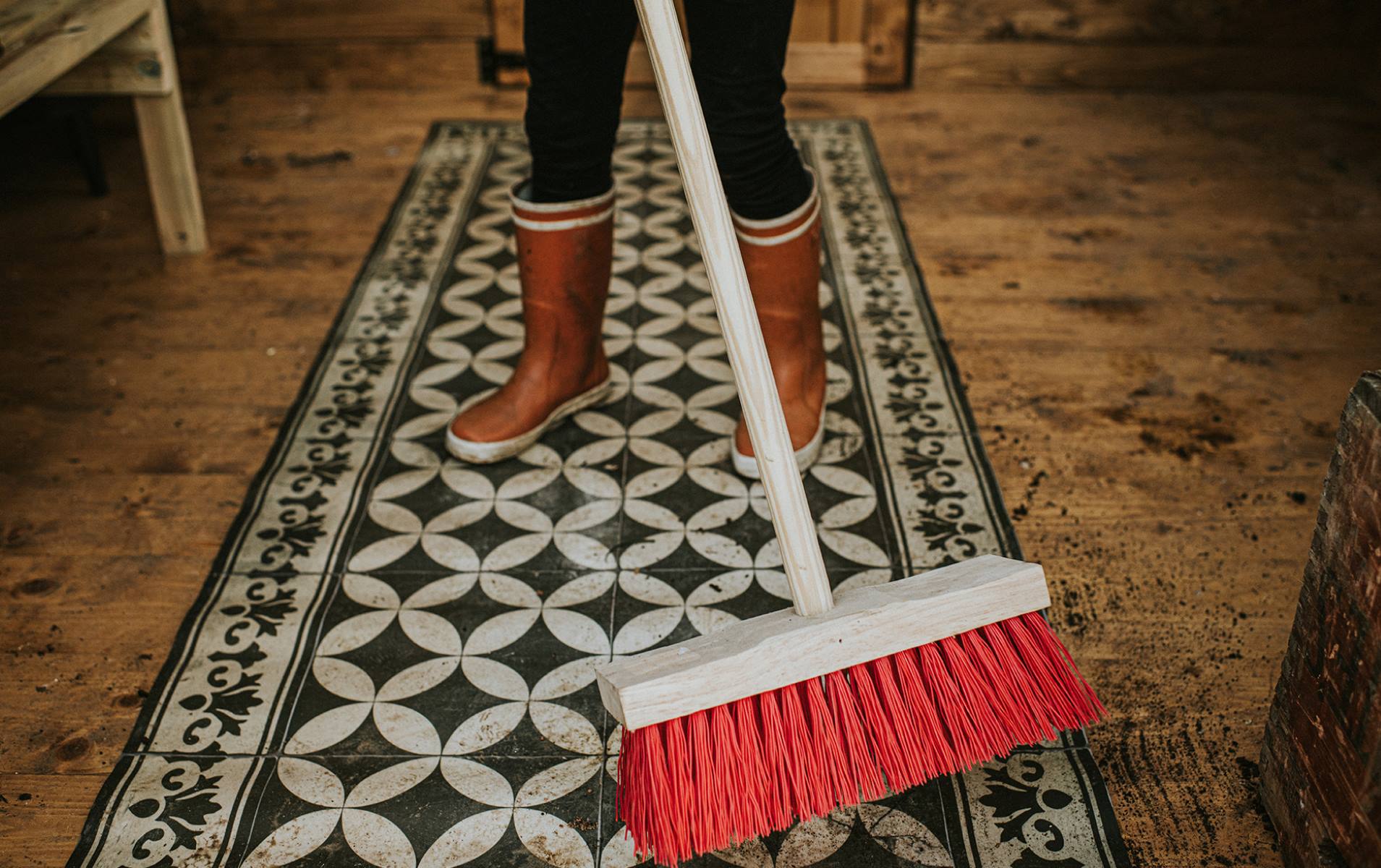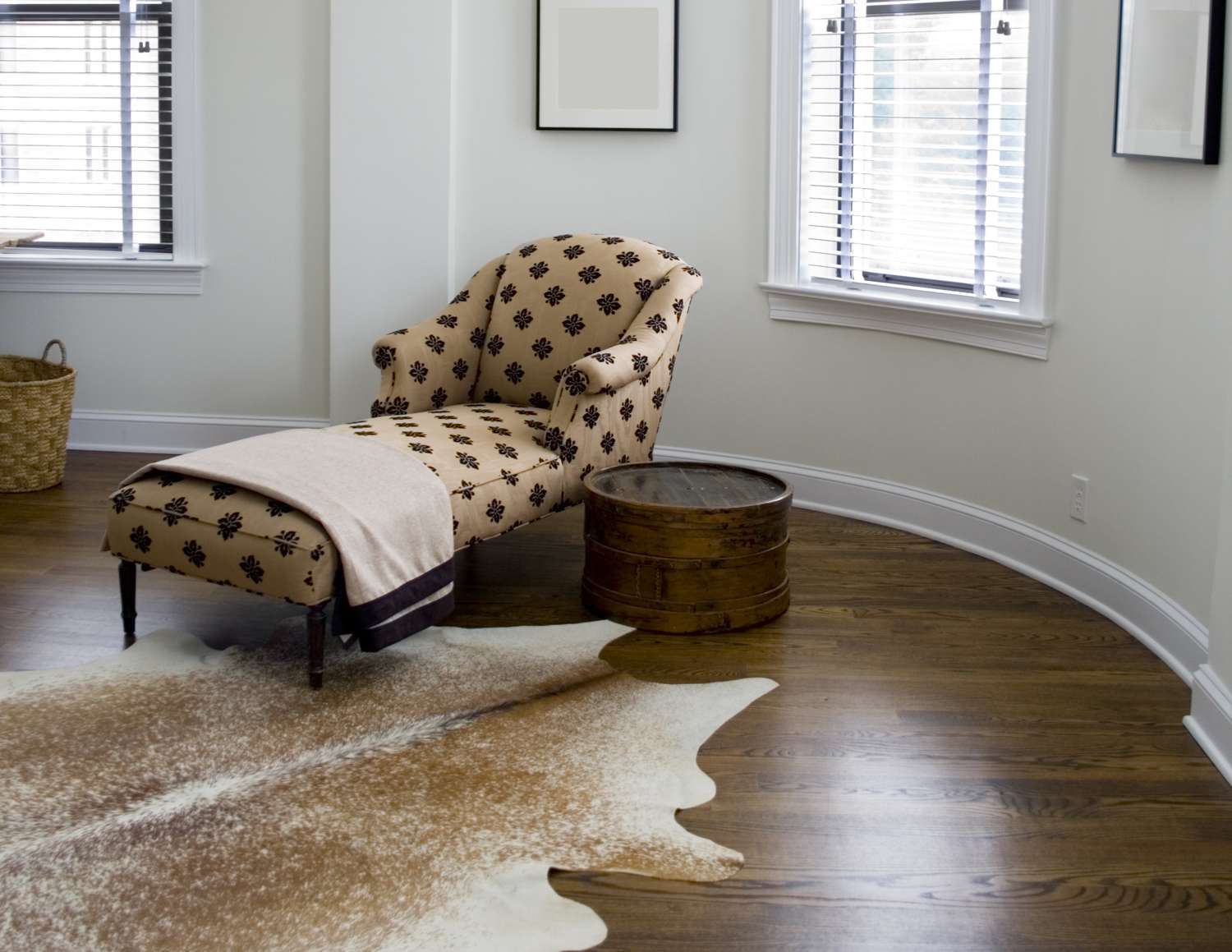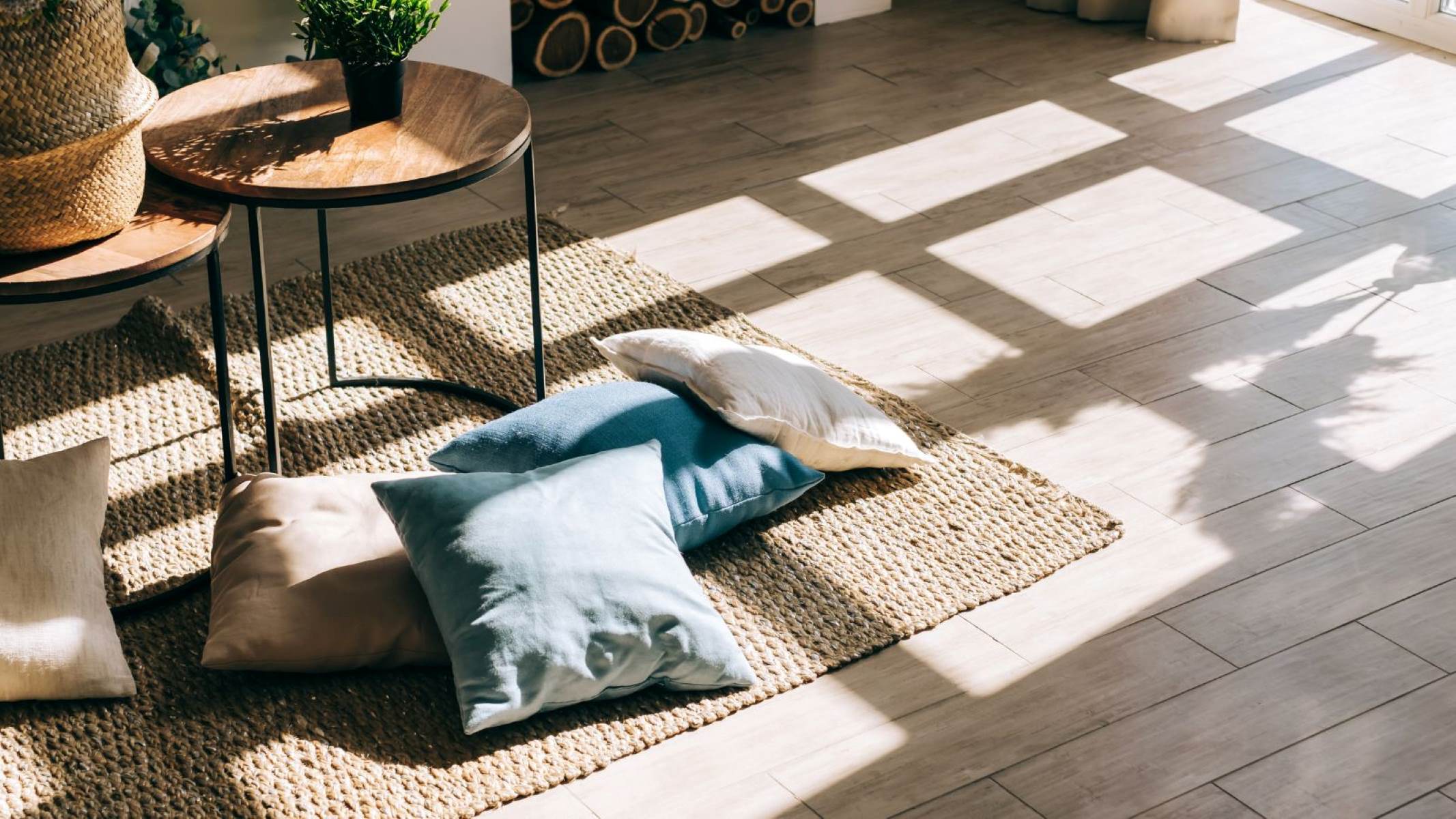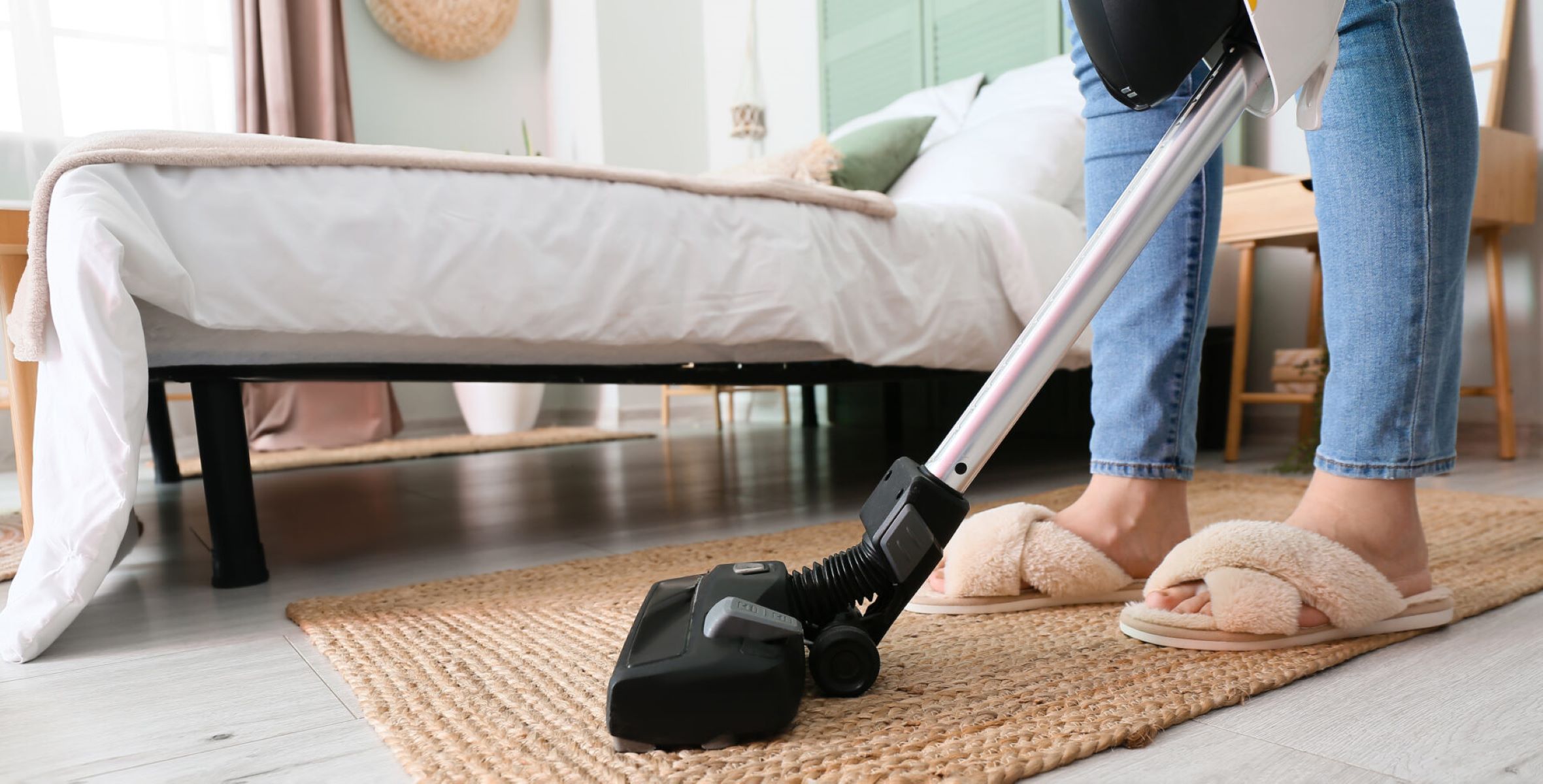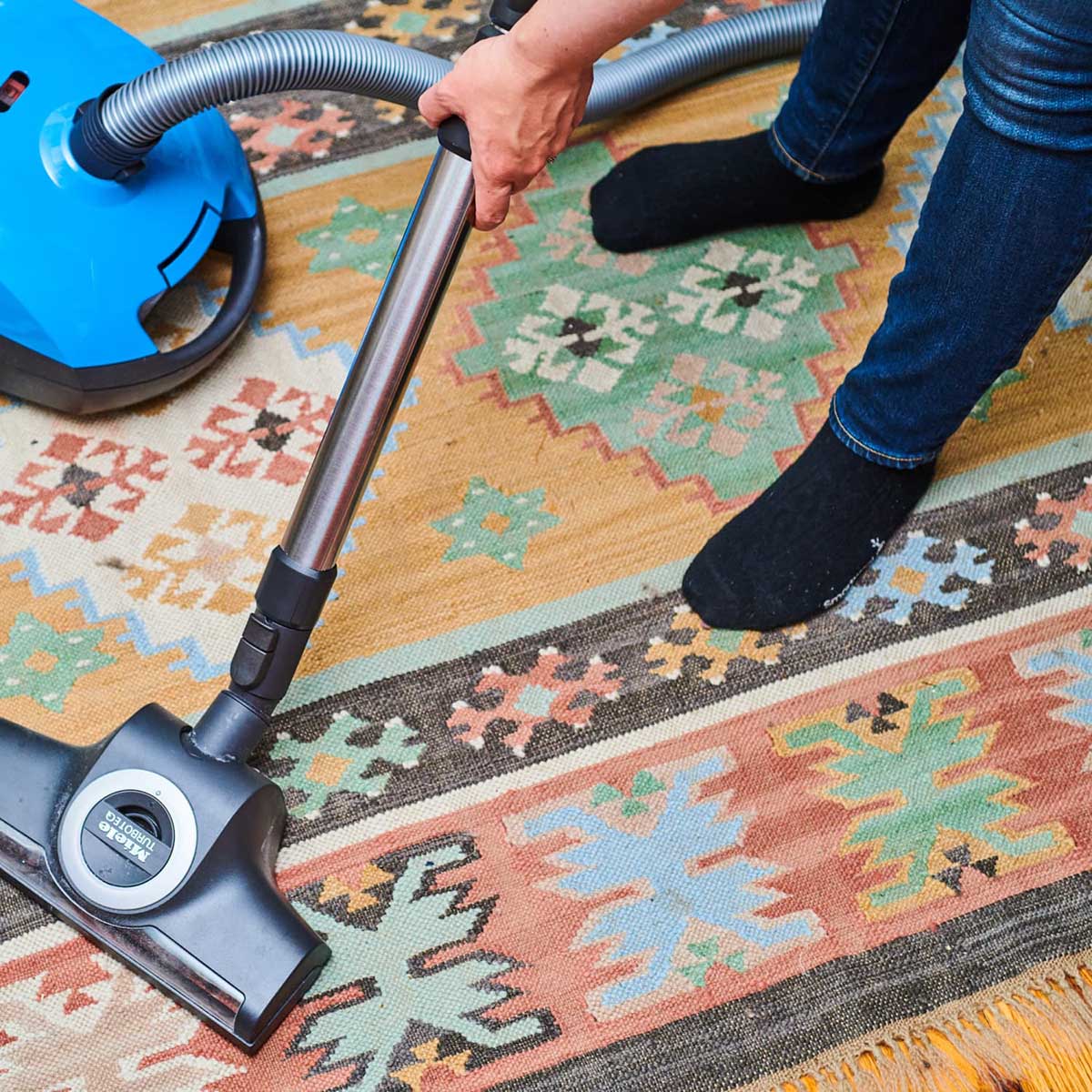

Articles
How To Clean A Carpet Rug
Modified: September 1, 2024
Learn effective methods for cleaning carpet rugs in this comprehensive article. Discover expert tips and tricks to keep your rugs spotless and fresh.
(Many of the links in this article redirect to a specific reviewed product. Your purchase of these products through affiliate links helps to generate commission for Storables.com, at no extra cost. Learn more)
Introduction
Welcome to the comprehensive guide on how to clean a carpet rug! Carpets rugs are not only a beautiful addition to any home or office space, but they also provide comfort and insulation. However, over time they can accumulate dirt, stains, and odors, making them look dull and unattractive. Regular cleaning is essential to maintain the cleanliness and longevity of your carpet rug.
Before diving into the cleaning process, it’s important to gather the necessary supplies. You’ll need a vacuum cleaner, cleaning solution or shampoo, a soft-bristle brush or sponge, clean cloths or towels, and access to water. Depending on the type of carpet rug and the level of dirt or stains, you may also require additional tools such as a carpet steam cleaner.
Preparing the area is the next step to ensure a successful cleaning. Move any furniture or obstacles that might hinder the cleaning process. This will allow you to have a clear and uninterrupted space to focus on cleaning the carpet rug. If there are any loose items or debris on the rug, remove them before starting the cleaning process.
Now it’s time to vacuum the carpet rug thoroughly. Use a vacuum cleaner with a rotating brush or an attachment specifically designed for cleaning carpets. Start by going over the entire rug in different directions to loosen and remove any loose dirt or debris. This step is crucial to prepare the rug for a deeper, more effective cleaning.
It is important to test the carpet rug for colorfastness before using any cleaning solutions. Choose a small, discreet area on the rug and apply a small amount of the cleaning solution. Gently blot the area with a clean cloth or towel and check for any color transfer. If there is no color transfer or damage to the rug’s color, you can proceed with the selected cleaning method.
Key Takeaways:
- Regular vacuuming and spot cleaning are essential for maintaining the cleanliness and appearance of your carpet rug. Prompt action and gentle treatment are key to successful stain removal.
- Properly drying your carpet rug after cleaning is crucial to prevent mold and mildew growth. Implementing consistent maintenance practices will ensure a clean, fresh, and visually appealing rug for years to come.
Read more: How To Clean Rugs Without A Carpet Cleaner
Gathering Supplies
Before embarking on the task of cleaning your carpet rug, it’s essential to gather all the necessary supplies. Having the right tools and cleaning solutions will make the cleaning process more efficient and effective. Here are some items you’ll need:
- Vacuum cleaner: Choose a vacuum cleaner with a rotating brush or an attachment specifically designed for carpets. This will help remove loose dirt, dust, and debris from the rug.
- Cleaning solution or carpet shampoo: Depending on the type of stains or dirt on your rug, you can choose from various cleaning solutions available in the market. Make sure to select a product that is suitable for the material of your carpet rug.
- Soft-bristle brush or sponge: This will be used to gently scrub the rug and remove stubborn stains or spots.
- Clean cloths or towels: Having clean cloths or towels handy is essential for blotting and drying the rug during the cleaning process.
- Water access: You’ll need access to water for rinsing and diluting the cleaning solution or shampoo.
- Additional tools: Depending on the level of dirt or stains, you may need additional tools such as a carpet steam cleaner or a spot cleaning machine.
When selecting a cleaning solution or carpet shampoo, be sure to read the instructions and follow them carefully. Different types of carpet rugs may require specific cleaning solutions to avoid any damage or discoloration. It’s always a good idea to do a patch test on a small, inconspicuous area of the rug to ensure compatibility and prevent any unwanted side effects.
Ensure that all your supplies are easily accessible before starting the cleaning process. This will save you time and make the cleaning task more efficient. Having everything prepared in advance will help you maintain a steady cleaning flow, ensuring that you cover every part of the carpet rug thoroughly.
Remember, choosing high-quality cleaning products and tools will make a significant difference in the outcome of your cleaning efforts. Investing in the right supplies will not only result in a clean and fresh-looking carpet rug but also extend its lifespan.
Preparing the Area
Before diving into the process of cleaning your carpet rug, it’s important to prepare the surrounding area. Taking the time to properly organize and clear the space will make the cleaning process more efficient and effective. Here are some steps to follow when preparing the area:
- Remove furniture and obstacles: Clear the area of any furniture, decor items, or other obstacles that could hinder the cleaning process. This will give you a clear and unobstructed space to work with.
- Vacuum the surrounding area: Use your vacuum cleaner to thoroughly clean the floor around the carpet rug. This will prevent any loose dirt or debris from resettling on the rug during the cleaning process.
- Protect the surrounding surfaces: If there are any delicate surfaces or furniture nearby, consider placing protective sheets or plastic coverings over them. This will prevent any accidental spills or damage during the cleaning process.
- Secure electrical cords: Make sure any electrical cords are safely tucked away and secured to avoid any accidents or tripping hazards during the cleaning process.
- Open windows or turn on fans: Providing adequate ventilation in the area is crucial, especially if you’re using cleaning solutions or shampoos that may emit strong odors. Opening windows or turning on fans will help in dissipating any fumes and quicken the drying process.
By taking adequate steps to prepare the area, you’ll create a safe and convenient space to clean your carpet rug. Removing furniture and obstacles will give you the freedom to move around and clean every corner of the rug without any hindrance. Additionally, vacuuming the surrounding area will prevent any dirt or debris from being transferred back onto the rug.
Protecting delicate surfaces and securing electrical cords will ensure that no accidental damage occurs during the cleaning process. This proactive approach will save you from unnecessary stress and potential costs of repairs or replacements.
Finally, proper ventilation is essential to maintain a fresh and clean environment. Opening windows or using fans will help in eliminating any odors and promoting faster drying of the carpet rug.
By following these steps and preparing the area beforehand, you’ll create an ideal setting for a hassle-free and effective carpet rug cleaning session.
Vacuuming the Carpet Rug
Vacuuming your carpet rug is a crucial step in the cleaning process. It helps to remove loose dirt, dust, and debris, preparing the rug for a deeper and more effective cleaning. Here are some tips on how to vacuum your carpet rug properly:
- Choose the right vacuum cleaner: Opt for a vacuum cleaner with a rotating brush or an attachment specifically designed for carpets. This will agitate the fibers and loosen the dirt, making it easier to remove.
- Clear the area: Before starting the vacuuming process, remove any furniture or obstacles from the rug’s surface. This will allow you to access every corner and ensure thorough cleaning.
- Adjust the vacuum cleaner settings: Most vacuum cleaners have adjustable height settings. Set the height according to the thickness of your carpet rug. Too low or too high settings can hinder the effectiveness of the vacuuming process.
- Start from the edges: Begin vacuuming from the edges of the rug and gradually move towards the center. This will prevent any debris or dirt from being pushed onto the surrounding floor.
- Go in different directions: To ensure thorough cleaning, vacuum the rug in different directions. This will help loosen embedded dirt or debris that may be trapped within the fibers.
- Pay attention to high-traffic areas: Areas that receive more foot traffic tend to accumulate more dirt and debris. Spend some extra time vacuuming these areas to ensure they’re thoroughly cleaned.
- Overlap each pass: When vacuuming, overlap each pass slightly to ensure you don’t miss any spots. This will help achieve an evenly cleaned surface.
- Pay attention to corners and edges: Use the crevice attachment or a smaller brush to clean the corners and edges of the rug. These areas can often accumulate more dirt and may require extra attention.
- Empty or replace the vacuum bag: If your vacuum cleaner has a bag, make sure to empty or replace it when it’s full. A full bag can affect the performance of the vacuum and reduce its suction power.
Vacuuming your carpet rug regularly not only keeps it looking clean and fresh but also prevents the accumulation of dirt and debris that can cause premature wear and tear. Aim to vacuum your rug at least once a week, or more frequently if it’s located in a high-traffic area.
By following these tips and incorporating regular vacuuming into your cleaning routine, you’ll not only maintain the appearance of your carpet rug but also prolong its lifespan.
Testing for Colorfastness
Before applying any cleaning solution or shampoo to your carpet rug, it’s crucial to test for colorfastness. Colorfastness refers to the ability of the rug’s colors to withstand the cleaning process without fading or bleeding. This step is essential to prevent any damage or discoloration to your carpet rug. Here’s how to test for colorfastness:
- Choose a small, inconspicuous area: Select a discreet area on the carpet rug, such as a corner or under a piece of furniture, where any potential color changes won’t be noticeable.
- Dilute the cleaning solution: If you’re using a concentrated cleaning solution or shampoo, dilute it according to the instructions provided. This will help avoid any potential damage due to the solution being too strong.
- Apply the cleaning solution: Using a clean cloth or sponge, apply a small amount of the diluted cleaning solution to the chosen test area. Gently blot the area without rubbing excessively.
- Check for color transfer: After applying the cleaning solution, inspect the cloth or sponge for any color transfer. If you notice any bleeding or fading of the rug’s colors onto the cloth, stop immediately. This indicates that the cleaning solution is not suitable for your carpet rug.
- Blot dry: Once you’ve completed the test, blot the test area dry with a clean cloth or towel. This will help remove any excess moisture and prevent prolonged exposure to the cleaning solution.
- Observe the test area: Allow the test area to dry completely and observe it for any changes in color or texture. If there are no visible changes or damage, it’s safe to proceed with the chosen cleaning method.
Testing for colorfastness is a crucial step in ensuring the safety of your carpet rug during the cleaning process. Different types of rugs may react differently to cleaning solutions, and this test helps you determine the compatibility of the cleaning product with your carpet rug’s colors.
If you notice any color bleeding or fading during the test, it’s best to consult a professional cleaner or manufacturer for advice on the appropriate cleaning methods or solutions for your specific rug. Using an unsuitable cleaning solution can lead to irreversible damage to the rug’s colors.
By taking the time to test for colorfastness, you’ll have peace of mind knowing that the cleaning process will not cause any harm to the appearance of your carpet rug. It’s always better to be safe than sorry when it comes to preserving the beauty and integrity of your rug.
Read more: How To Style A Rug On A Carpet
Choosing the Right Cleaning Method
Choosing the right cleaning method for your carpet rug is crucial to ensure effective and safe cleaning. The cleaning method you choose will depend on several factors, including the type of stains or dirt on the rug, the material of the rug, and the tools or equipment you have available. Here are some common carpet rug cleaning methods and when to use them:
1. Spot Cleaning:
If you have small, localized stains or spots on your carpet rug, spot cleaning is an effective method. Spot cleaning involves targeting specific areas of the rug to remove stains and spots. You can use a commercial stain remover or make a DIY solution using mild detergent and water. Apply the solution to the stained area, gently blot with a clean cloth or sponge, and repeat if necessary. Spot cleaning is ideal for fresh spills or recent stains.
2. Carpet Shampooing:
Carpet shampooing is a more thorough cleaning method that involves using a carpet shampoo or cleaning solution to clean the entire carpet rug. It is recommended for rugs with heavy dirt and stains or as part of a regular deep cleaning routine. Dilute the carpet shampoo according to the instructions, apply it to the rug using a soft-bristle brush or sponge, and work it into the fibers. Allow the shampoo to sit for the recommended time and then rinse with water, either using a wet cloth or a carpet cleaning machine.
3. Carpet Steam Cleaning:
Carpet steam cleaning, also known as hot water extraction, is a professional-grade cleaning method that deep cleans the carpet rug by using hot water and detergent. This method is ideal for removing deep-seated dirt and stains, as well as killing bacteria and allergens. A carpet steam cleaner uses hot water and a cleaning solution to extract dirt from the rug’s fibers, simultaneously vacuuming up the dirt and moisture. It is recommended for periodic deep cleaning or for heavily soiled carpet rugs.
When choosing the right cleaning method, always consider the material of your carpet rug. Certain materials, such as delicate wool or silk rugs, may require specialized cleaning methods or professional assistance to avoid damage. Additionally, always follow the manufacturer’s recommendations and guidelines for cleaning your specific type of rug.
Remember to always test any cleaning method or solution on a small, inconspicuous area of the rug to ensure compatibility and avoid any potential damage. If you’re unsure or have concerns about the appropriate cleaning method for your carpet rug, it’s best to consult a professional cleaner to ensure the best results and protection for your rug.
By choosing the right cleaning method based on the condition and material of your carpet rug, you’ll achieve effective and safe results, leaving your rug looking clean, fresh, and restored.
Read more: How To Secure A Rug On A Carpet
Removing Stains and Spots
Stains and spots on a carpet rug can be unsightly and difficult to remove. However, with the right approach and tools, you can effectively tackle these blemishes and restore the appearance of your rug. Here are some steps to help you remove stains and spots from your carpet rug:
- Act quickly: The sooner you attend to a stain or spot, the easier it is to remove. Try to address the stain as soon as it occurs or as soon as you notice it to prevent it from setting into the fibers of the rug.
- Blot, don’t rub: When dealing with a fresh stain, start by blotting the area with a clean cloth or paper towel to absorb as much of the liquid as possible. Avoid rubbing the stain, as this can push it deeper into the rug or spread it to a larger area.
- Pre-treat the stain: Depending on the type of stain, you can pre-treat it with a suitable cleaning solution. Common household items like mild dish soap, vinegar, or hydrogen peroxide can be effective for treating certain stains. Dilute the cleaning solution and gently apply it to the stain with a clean cloth or sponge, working from the outer edges towards the center.
- Blot and rinse: After applying the cleaning solution, continue blotting the stain with a clean cloth or paper towel. If necessary, rinse the area with plain water to remove any residue or cleaning solution. Again, blot the area to remove excess moisture.
- Repeat if necessary: For stubborn or set-in stains, you may need to repeat the pre-treatment and blotting process multiple times. Patience and persistence are key to achieving the best results.
- Consider professional cleaning: If you’re unable to remove a stubborn stain or if you’re dealing with a delicate or valuable rug, it’s best to seek the assistance of a professional carpet cleaner. They have specialized knowledge and equipment to handle even the toughest stains without causing damage.
Keep in mind that different types of stains may require different treatment approaches. Here are some common types of stains and suitable remedies:
- Food and beverage stains: Blot the stain, then treat it with a mixture of mild dish soap and water.
- Oil-based stains: Blot the stain, then apply a solvent-based cleaner or a mixture of vinegar and water.
- Pet stains: Blot the stain, then treat it with an enzymatic cleaner specifically designed for pet stains.
- Blood stains: Blot the stain, then use cold water to rinse it. If necessary, apply a mixture of hydrogen peroxide and water.
It’s important to always test any cleaning solution on a small, inconspicuous area of the rug before treating the entire stain. This will help ensure that the solution doesn’t cause any discoloration or damage to the rug’s fibers.
By following these steps and using the appropriate techniques, you can effectively remove stains and spots from your carpet rug, restoring its look and freshness. Remember, prompt action and gentle treatment are key to successful stain removal.
Cleaning with Carpet Shampoo
Carpet shampooing is an effective method to deep clean your carpet rug and remove dirt, stains, and odors. Using a carpet shampoo or cleaning solution, you can restore the freshness and vibrancy of your rug. Here’s a step-by-step guide on how to clean your carpet rug with a carpet shampoo:
- Prepare the rug: Clear the rug of any furniture or obstacles, and thoroughly vacuum the rug to remove loose dirt and debris.
- Dilute the carpet shampoo: Read the instructions on your chosen carpet shampoo and dilute it with water according to the recommended ratio. Diluting the shampoo helps to avoid using it too concentrated, which may lead to over-wetting or residue on the rug.
- Test for colorfastness: Before applying the shampoo to the entire rug, it’s vital to test for colorfastness. Choose a small, inconspicuous area and apply a small amount of the diluted shampoo. Use a clean cloth or sponge to gently blot the area and check for any color transfer or damage.
- Apply the shampoo: Use a soft-bristle brush or sponge to apply the diluted shampoo to the rug. Start from one end and work your way to the other, making sure to cover the entire rug. Avoid saturating the rug with excessive amounts of shampoo, as this can lead to longer drying times.
- Gently agitate the rug: After applying the shampoo, use gentle circular motions or back-and-forth strokes with the brush or sponge to work the shampoo into the fibers. This action will help to loosen dirt and break up stains.
- Leave the shampoo on: Check the instructions on the shampoo to determine the recommended duration for leaving it on the rug. This allows the shampoo to penetrate and lift dirt effectively.
- Rinse the rug: After the recommended time, rinse the rug thoroughly with clean water. You can use a wet cloth or a carpet cleaning machine to remove the shampoo. Be sure to remove all traces of the cleaning solution.
- Dry the rug: Use clean towels or cloths to blot the excess moisture from the rug. Allow the rug to air dry completely before placing any furniture back on it or walking on it.
It’s worth noting that different types of carpet shampoos may have slightly different instructions or specific recommendations. Therefore, it’s essential to carefully read and follow the instructions provided by the manufacturer of your chosen carpet shampoo.
Carpet shampooing is an excellent method for deep cleaning your carpet rug, removing embedded dirt, and reviving its appearance. It’s recommended to perform carpet shampooing periodically, depending on the level of dirt and foot traffic in your space.
If you’re unsure about tackling the task on your own or if you have a delicate or valuable rug, it’s advisable to seek professional assistance. Professional carpet cleaners have the expertise and specialized equipment to handle different types of rugs and ensure a thorough and safe cleaning process.
By following these steps and using the appropriate carpet shampoo, you can enjoy a clean, fresh, and rejuvenated carpet rug in your home or office.
Using a Carpet Steam Cleaner
Carpet steam cleaning, also known as hot water extraction, is an effective method for deep cleaning your carpet rug. It utilizes hot water and a cleaning solution to extract dirt, stains, and allergens from the rug’s fibers. If you have access to a carpet steam cleaner, here’s a step-by-step guide on how to use it:
- Prepare the rug: Clear the rug of any furniture or obstacles, and thoroughly vacuum the rug to remove loose dirt and debris.
- Read the instructions: Familiarize yourself with the user manual or instructions provided with your carpet steam cleaner. Each machine may have specific guidelines and recommendations for operation.
- Dilute the cleaning solution: Most carpet steam cleaners have a separate tank for water and cleaning solution. Follow the instructions on the cleaning solution bottle to dilute it with water as recommended. Fill the tank of the steam cleaner with the diluted cleaning solution.
- Choose the appropriate attachment: Select the attachment that is suitable for cleaning carpets and attach it to the steam cleaner according to the machine’s instructions.
- Start cleaning: Plug in the steam cleaner and turn it on. Begin cleaning by moving the machine across the rug in a slow and deliberate motion. Squeeze the trigger or press the button to release the cleaning solution and hot water onto the rug’s surface.
- Overlap each pass: Make sure to overlap each pass slightly to ensure thorough cleaning coverage. This will help remove dirt and stains more effectively.
- Pay attention to heavily soiled areas: If there are specific areas with heavy dirt or stains, spend extra time and attention on those spots. Move the steam cleaner back and forth over these areas to ensure thorough and targeted cleaning.
- Extract the moisture: The steam cleaner will simultaneously extract the hot water, cleaning solution, and dirt from the rug. Ensure that you’re following the machine’s instructions to properly extract the moisture, preventing any excess moisture from remaining in the rug.
- Allow for proper drying: After steam cleaning, it’s essential to give the rug enough time to dry completely. Open windows, turn on fans, or use dehumidifiers to promote quicker drying. Avoid placing any furniture back on the rug until it’s completely dry to prevent any potential damage or staining.
Carpet steam cleaning is an effective method for deep cleaning carpets and removing deeply embedded dirt, stains, and allergens. It’s recommended to perform steam cleaning periodically, especially for high-traffic areas or heavily soiled rugs.
It’s worth noting that some delicate or valuable rugs may require professional steam cleaning to avoid any potential damage. If you’re unsure or have concerns, it’s best to consult a professional carpet cleaner to ensure the appropriate cleaning method for your specific rug.
By following these steps and using a carpet steam cleaner correctly, you’ll achieve a deep and thorough cleaning of your carpet rug, leaving it looking refreshed and revitalized.
Drying the Rug
Properly drying your carpet rug after cleaning is essential to prevent mold and mildew growth, as well as to avoid any potential damage to the rug’s fibers. Here’s a step-by-step guide on how to effectively dry your rug:
- Remove excess moisture: After cleaning the rug, use clean towels or cloths to blot and absorb as much excess moisture as possible. Press the towels firmly against the rug to draw out the moisture.
- Air circulation: Promote air circulation in the room by opening windows, turning on fans, or using dehumidifiers. Fresh air and air movement aid in faster drying and prevent any lingering dampness.
- Elevate the rug: If possible, elevate the rug off the floor to allow air to circulate beneath it as well. You can use furniture risers, wooden blocks, or any other sturdy objects to prop up the rug.
- Avoid direct sunlight: While sunlight can help with drying, prolonged exposure to direct sunlight can cause colors in the rug to fade. It’s best to keep the rug away from direct sunlight during the drying process.
- Rotate the rug: Periodically rotate the rug to ensure even drying. This will help prevent any possible discoloration or uneven drying on one side of the rug.
- Use a fan or blow dryer (optional): If you need to speed up the drying process, you can use a fan or blow dryer on a low or cool setting. Keep a safe distance to avoid overheating the rug or causing damage.
- Patience is key: Allow ample time for the rug to dry completely, which can take anywhere from a few hours to a couple of days, depending on the thickness of the rug and the humidity levels in the room.
- Check for moisture: To ensure the rug is completely dry, check for any moisture by pressing a clean, dry cloth against different areas of the rug. If there is no transfer of moisture onto the cloth, the rug is dry and ready for use.
It’s important to note that wet or damp rugs can attract dirt and can become a breeding ground for mold and mildew. Ensuring that your rug is thoroughly dry before returning it to its designated area will help maintain its cleanliness and prevent any potential damage.
If you’re concerned about the drying process or if you’ve cleaned a delicate or valuable rug, it’s advisable to consult a professional cleaner who can use proper drying techniques and equipment to ensure the rug is dried thoroughly and safely.
By following these steps and allowing enough time for proper drying, you’ll ensure that your carpet rug is clean, fresh, and ready to be enjoyed once again.
Read more: How To Turn A Carpet Into A Rug
Finishing Touches and Maintenance
Once you’ve cleaned and dried your carpet rug, there are a few finishing touches and ongoing maintenance steps you can take to keep it looking fresh and extend its lifespan. Here are some essential tips:
Vacuum regularly:
Regular vacuuming is key to maintaining the cleanliness of your carpet rug. Aim to vacuum at least once a week or more frequently in high-traffic areas. This helps to remove dirt, dust, and debris that can accumulate on the surface and within the fibers of the rug.
Spot clean immediately:
Address any spills or stains promptly to prevent them from setting into the rug. Blot the affected area with a clean cloth or paper towel and treat it with an appropriate stain remover or a mixture of mild detergent and water. Avoid rubbing the stain, as this can spread it further.
Rotate the rug:
Rotate your carpet rug periodically to ensure even wear and prevent specific areas from becoming more worn out or faded than others. This helps distribute foot traffic and sunlight exposure, prolonging the overall lifespan of the rug.
Read more: How To Wash A Carpet Rug
Protect from sunlight:
Prolonged exposure to direct sunlight can fade colors and damage the fibers of the rug. Use curtains, blinds, or UV-blocking window films to protect the rug from excessive sunlight. If necessary, rotate the rug or use furniture to block out direct sunlight during peak times of the day.
Use rug pads:
Consider placing rug pads underneath your carpet rug to provide cushioning and prevent slipping. Rug pads also help to protect the rug’s backing and reduce friction between the rug and the floor, which can minimize wear and tear.
Professional cleaning:
Periodically, consider having your carpet rug professionally cleaned. Professional cleaners have the expertise and specialized equipment to give your rug a deeper, thorough cleaning. This can help remove embedded dirt, revitalize the fibers, and maintain the rug’s overall appearance.
Regular maintenance checks:
Regularly inspect your carpet rug for any signs of wear, loose threads, or damaged areas. If you notice any issues, address them promptly to prevent further damage. Additionally, check the rug’s edges and corners for any potential unraveling and secure them if needed.
By implementing these finishing touches and following a consistent maintenance routine, you’ll ensure that your carpet rug remains clean, fresh, and in excellent condition for years to come.
Remember that different rugs may have specific care instructions or recommendations from the manufacturer. Always refer to these guidelines for the best maintenance practices and to ensure the longevity of your specific rug.
Blot spills immediately with a clean cloth to prevent them from setting into the carpet fibers. Avoid rubbing the spill, as this can spread the stain.
Read more: How To Clean Viscose Rugs
Conclusion
Cleaning and maintaining your carpet rug is essential for keeping it looking fresh, vibrant, and prolonging its lifespan. With the right tools, techniques, and a little bit of effort, you can easily remove dirt, stains, and odors from your rug, restoring its beauty and ensuring a clean environment in your home or office.
Start by gathering the necessary supplies, including a vacuum cleaner, cleaning solutions or shampoo, soft-bristle brush or sponge, and clean cloths or towels. Preparing the area by removing furniture and obstacles, vacuuming the rug to remove loose dirt, and testing for colorfastness are crucial steps to ensure a successful cleaning process.
Depending on the type and extent of dirt or stains on your rug, you have several cleaning methods to choose from. Spot cleaning is ideal for small, localized stains, while carpet shampooing provides a thorough cleaning for more extensive dirt and stains. Using a carpet steam cleaner, also known as hot water extraction, is a professional-grade method to deep clean your rug.
After cleaning, proper drying is essential to avoid mold and mildew growth. Remove excess moisture by blotting with towels, promote air circulation, and avoid direct sunlight. Allow the rug to dry completely before placing any furniture back on it.
To maintain your carpet rug’s cleanliness and appearance, vacuum regularly, spot clean spills immediately, rotate the rug periodically, and protect it from direct sunlight. Consider using rug pads for added cushioning and to prevent slipping. It’s also beneficial to have your rug professionally cleaned periodically for a deeper and thorough cleaning.
By implementing these cleaning and maintenance practices, you’ll not only keep your carpet rug looking its best but also prolong its lifespan. Regular care and attention will help you enjoy a clean, fresh, and visually appealing carpet rug for years to come.
Remember to refer to the manufacturer’s recommendations and guidelines specific to your rug to ensure proper care and maintenance. With consistency and care, your carpet rug will continue to enhance the beauty and comfort of your space for many years.
Frequently Asked Questions about How To Clean A Carpet Rug
Was this page helpful?
At Storables.com, we guarantee accurate and reliable information. Our content, validated by Expert Board Contributors, is crafted following stringent Editorial Policies. We're committed to providing you with well-researched, expert-backed insights for all your informational needs.
